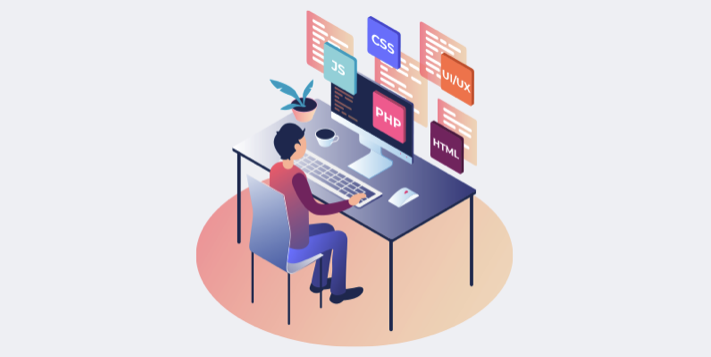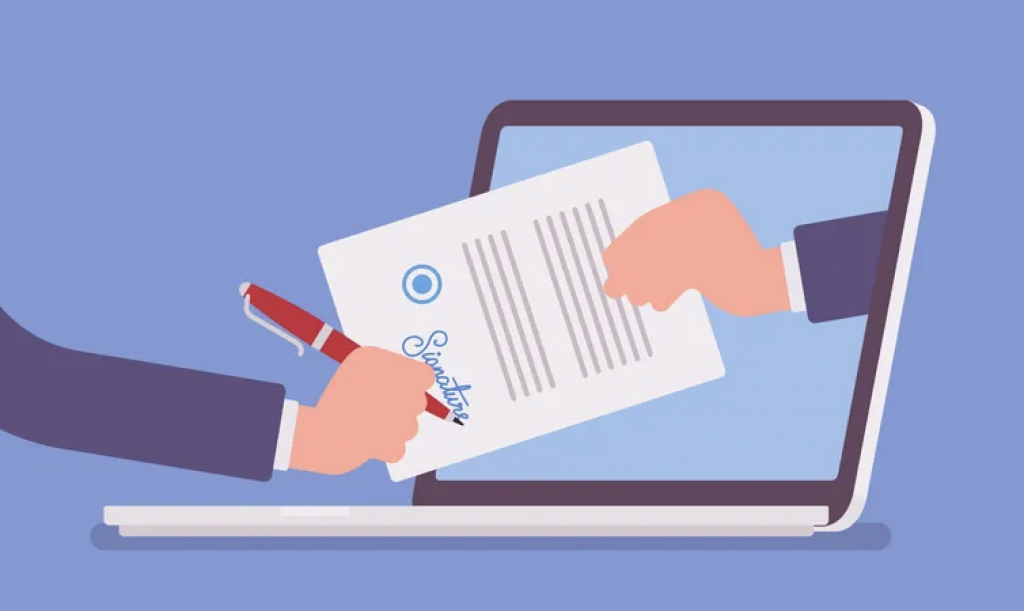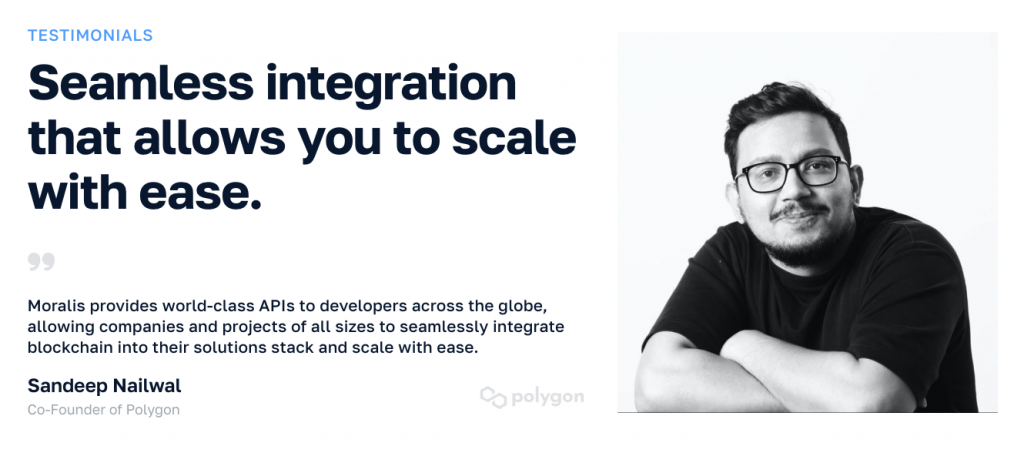During the last couple of years, we’ve seen the blockchain industry take the world by storm, and numerous blockchain use cases have disrupted the status quo. There is no indication that this trend will seize in the long run, making this an exciting and attractive industry even in an economic recession. Consequently, exploring the space and taking on blockchain development might be the best way to future-proof your career. If this sounds exciting, join us in this article, as we will point you in the right direction and provide insight into how you can learn Web3 programming!
To begin, we will initiate this guide by exploring the intricacies of Web3 programming. From there, the article explains how to start programming in Web3 by providing an overview of two central components of blockchain development: frontend and smart contract programming. Next, we explore the most prominent smart contract programming languages, where we cover Solidity, Vyper, Rust, Huff, and Go. To top things off, the article finally presents various ways in which you can learn Web3 programming.
Moreover, if you are serious about getting into Web3 programming, you should check out Moralis. Moralis is the best Web3 infrastructure provider, supplying tools such as software development kits (SDKs), application programming interfaces (APIs), etc., enabling you to build dapps and other blockchain projects in no time. In fact, through its Web3 APIs, Moralis presents the fastest way to build a Web3 app!
So, if you want to use your Web3 programming skills efficiently, sign up with Moralis now to fully leverage the power of blockchain technology. Creating an account is free, so you have nothing to lose!
What is Web3 Programming?
In order to understand Web3 programming, a good starting point is to explore the intricacies of the decentralized web. Now, unless you’ve been living under a rock, odds are you’ve stumbled upon the term ”Web3”. However, although you might be familiar with the term, you might not be entirely sure what it entails. So, what exactly is Web3?
In short, most people regard Web3 as the third – and most recent – ”phase” or ”generation” of the internet. As you might have figured, the two prior phases are Web1 and Web2, each distinguished by certain characteristics. Moreover, we can summarize these phases like this:
- Web1 – Static
- Web2 – Dynamic
- Web3 – Decentralized
During Web1 – the initial phase of the internet – the characterizing feature of the web was primarily to supply content/information. During this time, the internet lacked interactive elements, and the web experience was relatively static. However, with the rise of prominent social media conglomerates, the static nature of Web1 rapidly shifted to become more dynamic, which introduced the second phase: Web2.
Web2 is currently the predominant phase most of today’s people are familiar with. Unfortunately, another pervading characteristic of this phase is centralization. This induces drawbacks with privacy, transparency, and single points of failure. Moreover, these are some of the issues currently driving the rapid transition towards Web3, which instead is characterized by decentralization!

At the very center of Web3 is blockchain and smart contract technology, enabling a new level of decentralization and innovation. Consequently, a large part of programming within this space revolves around interacting with blockchain networks and creating smart contracts to build decentralized applications (dapps).
Nevertheless, to summarize, Web3 programming revolves around creating dapps and other platforms built on blockchain networks powered by smart contracts. So, how do you go about starting to develop dapps within Web3?
How Do I Start Programming in Web3?
Web3 programming can generally be divided into two central parts: frontend and smart contract development. Consequently, to start in Web3, you should advance your proficiency in programming languages related to your goals. So, what are frontend and smart contract programming languages?

Let us start with the former and look closely at Web3 frontend programming languages. Frontend programming in Web3 is relatively similar to conventional development practices. As such, you can use many of the same languages and tools. This, for example, includes JavaScript, HTML, and CSS:
- JavaScript (JS) – JS is an object-oriented programming language that enables developers to create and add interactive elements to a website.
- HTML – HTML is short for ”HyperText Markup Language”. Furthermore, developers utilize this language to structure the content of a website.
- CSS – CSS, or Cascading Style Sheets, enables developers to style their websites. This includes customizing the layout, colors, animations, etc.
The second part of Web3 programming is smart contract development. Moreover, to create smart contracts, you must master a smart contract programming language. However, what are they? To answer that question, we initially need to explore the ins and outs of smart contracts.

Smart contracts are sets of immutable instructions executed on the various blockchain networks when predetermined conditions are met. This is a relatively new technology, meaning that specialized Web3 programming languages are used to build them. These languages enable developers to build contracts that can securely guarantee transaction settlements, transfer ownership, access assets, and much more!
Nevertheless, now that you have a better understanding of the two central parts of Web3 programming and what they entail, let us dive into the top smart contract programming languages. Furthermore, we will explore these in more detail, as this is where Web3 programming most significantly differs from conventional Web2 development.
Languages for Web3 Programming
If you want to learn Web3 programming, an excellent way to start is by diving into a blockchain programming language. The industry features multiple languages for writing smart contracts. Unfortunately, we can only cover some of them in this article. Consequently, we will narrow the scope and focus on five prominent examples:
- Solidity – Solidity is the most popular programming language for building Ethereum Virtual Machine-compatible (EVM) smart contracts. It is an object-oriented, Turing-complete, high-level language with C++, JavaScript, and Python influences. Consequently, if you are familiar with any of these languages, you can more effortlessly learn Solidity.
- Vyper – Vyper is a programming language for building smart contracts compatible with EVM, much like Solidity. However, Vyper features more influences from Python in comparison to Solidity. As a result, this language leverages Python’s simple syntax and emphasizes building secure smart contracts.
- Rust – Rust is a multi-paradigm, low-level, statically typed programming language focusing on security and performance. This language is mainly used for building Solana smart contracts. What’s more, with Rust, developers can manage memory, write low-level code, leverage parallelism, and much more.
- Huff – This is an assembly-level programming language developers use to manually influence EVM’s stack to write optimized smart contracts. As such, instead of hiding the structure of EVM in layers of intuitive abstractions, Huff highlights it.
- Go (Golang) – Go, or Golang, is an open-source, compiled programming language designed by Google. One distinguishing feature of Go is the language’s concurrency feature. Through this, developers can easily use Go to create fast and concurrent programs.

That covers five prominent examples of essential Web3 programming languages. From here, you might be asking yourself, ”how can I learn any of these smart contract programming languages?”. Let’s find out!
How to Learn Web3 Programming?
There are many different ways in which you can learn Web3 programming and the associated languages. For instance, a common strategy is to turn to YouTube for video tutorials covering the ins and outs of blockchain development. If you are a video learner, we highly recommend checking out Moralis’ YouTube channel. Even though these Moralis videos do not necessarily teach you the intricacies of a Web3 programming language, they cover many essential aspects of Web3 development.
In addition to video tutorials featured on YouTube, another way to learn Web3 programming is through an educational platform like Moralis Academy. Moralis Academy offers a selection of industry-leading Web3 programming courses for both novice and more experienced developers. Moreover, if you have a particular interest in blockchain programming languages, check out the “Ethereum Fundamentals” course for Solidity or enroll in the “Rust Programming” course!
In combination with Moralis Academy, you can also check out Moralis’ Web3 blog for great educational development content. For instance, read up on all you need to know about the best Ethereum Web3 API or learn how to get token metadata.
Lastly, our final recommendation is to read various Web3 documentation pages. Most languages, such as Solidity, have documentation covering the intricacies of the programming language and guides for getting started!
However, even when proficient in a Web3 programming language, the blockchain space can still be relatively difficult to navigate. From a conventional perspective, it has been challenging to get into Web3 programming to start building dapps due to the inherently complex nature of interacting with the various blockchain networks. Consequently, developers have turned to blockchain infrastructure companies like Moralis for a more straightforward development process!
However, what exactly is Moralis, and why is it helpful?
Start Building On Web3 with Moralis
Moralis is the best Web3 infrastructure provider, enabling you to fully unlock the power of blockchain technology. Moralis’ various Web3 APIs bridge the development gap between Web2 and Web3, allowing you to build scalable dapps smarter and more efficiently!
TRUSTED BY INDUSTRY LEADERS





Furthermore, you can develop Web3 projects for multiple blockchain networks thanks to Moralis’ cross-chain compatibility. This includes Ethereum, Solana, BNB Chain, and many more. In addition, Moralis is trusted by industry leaders such as MetaMask, Delta, Polygon, and others, which is a great indicator of Moralis’ reliability.
The Streams API, Auth API, and Token API are three prominent examples of tools featured by Moralis. With these tools and the overall accessibility of Moralis, you can create dapps and other platforms in a matter of minutes. In fact, you can, for instance, build a NodeJS application for fetching the balance of a crypto wallet in only three straightforward steps:
- Setting up the project and an Express server
- Adding Moralis
- Creating the “get native balance” function
If this sounds interesting and you want a more detailed breakdown of the steps above, check the official documentation page to build your first dapp with NodeJS. You can also read the following guide covering the process from start to finish: “Easy Web3 Programming Tutorial for Blockchain Development”.
Moreover, you can create your Moralis account free of charge, which only takes a couple of seconds. As such, if you want a more seamless developer experience, sign up with Moralis now to leverage the full power of blockchain technology.
Summary – Learning Blockchain Programming
With the tremendous interest that the blockchain industry has seen in the past couple of years, it might be more timely than ever to get into blockchain development yourself. This is partly the reason why we took this article to point you in the right direction for learning Web3 programming.
In doing so, we started by exploring the intricacies of Web3 programming, where you learned that it consists of two central parts: frontend and smart contract development. Moreover, as smart contract development is where Web3 programming differs most significantly from conventional development practices, we explored five examples of languages for writing these programs:
- Solidity
- Vyper
- Rust
- Huff
- Go
Once you briefly learned what these languages entailed and what they were used for, the article also presented four potential ways in which you could learn to master Web3 programming. This included YouTube videos, educational platforms such as Moralis Academy, Moralis’ Web3 blog, and blockchain documentation pages.
Lastly, to top things off, the article introduced the best Web3 infrastructure provider – Moralis. With Moralis and the featured development tools, including the best token price API in 2023, you can use your Web3 programming skills to create dapps and other platforms more seamlessly. This enables you to cut both development resources and time significantly!
Nevertheless, check out additional content here at Moralis if you found this tutorial helpful. For example, read about interesting concepts such as danksharding and the Sepolia testnet, or learn all you need to know about how to get any token price. What’s more, if you are serious about getting into blockchain development, sign up with Moralis now! In doing so, you can leverage the power of blockchain technology to build dapps and other platforms more seamlessly using significantly fewer resources!

What is ERC-4337? Full EIP-4337 Guide